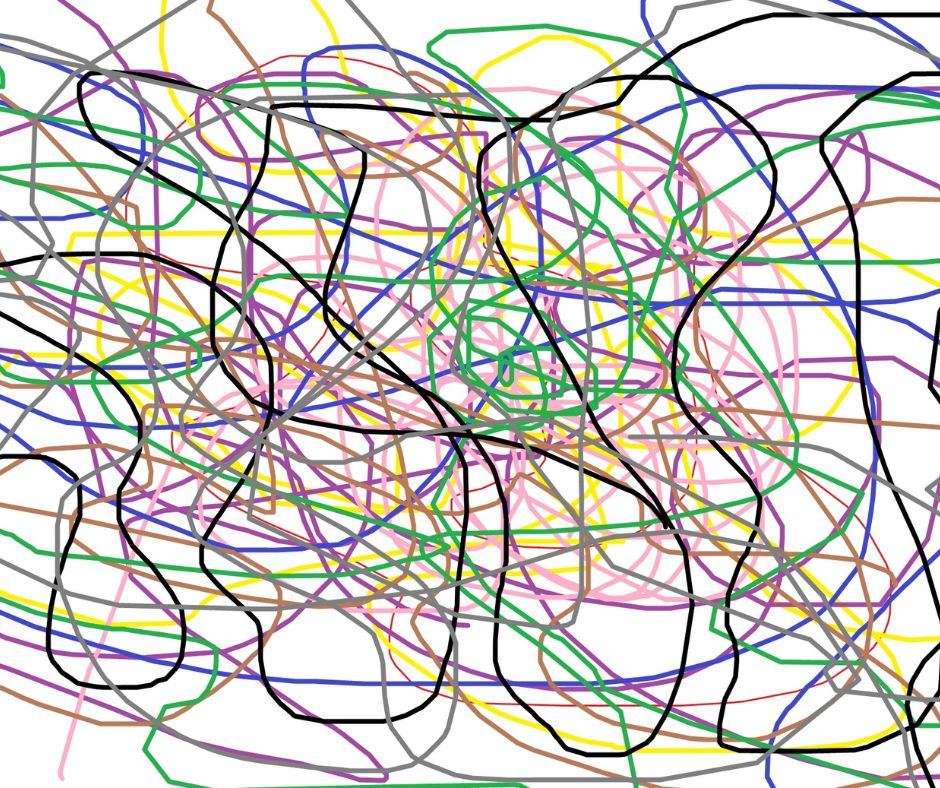
Dealing with grief is overwhelming.
As you try to come to terms with your grief it can feel so hard to do. Being able to verbalise what you are feeling and experiencing can be so difficult to accomplish that many people never process their grief to that depth.
Grief is complex, overwhelming and unsettling.
The 5 stages of death belief
Back in the 70s it was thought that grief was processed in a straight line. There was a five stage process that you went through in that order. According to this theory you were supposed to experience the stages of:
- Denial
- Anger
- Bargaining
- Depression
- Acceptance
Later an extra stage was added:
- Meaning
This was a theory formed to describe the process of dying, not the process of grief.
So much harm was done to people who weren’t grieving according to the rigid stages structure. Even today, there are those who adhere to this long defunct theory.
The effects of grief are more complex than a simple linear theory.
The tasks of grieving
There have been many theories of death proposed since then. In many of the theories it was suggested there were “tasks” to be completed during the grieving process.
One of the most popular theories gives four tasks:
- Accept the reality of the loss
- Process the pain of grief
- Adjust to a world without the one you lost
- Find an enduring connection with the person in the midst of embarking on a new life.
The tasks in themselves aren’t wrong. But a rigid adherence to them is not helpful when you are grieving.
Oscillating between grief and life
More recently the Dual Process Model has become popular. In this theory you oscillate between loss oriented mode and restoration oriented mode. This model has great validity. You need to keep living so you do have to live in the real world and there are tasks of living you still need to do. Additionally you need to learn how to live in the world without the one you love. You also need to process the loss so you need to spend time and allow yourself to experience and accept the emotional pain of your loss.
But there is more to understanding grief than oscillating from loss and restoration.
Multidimensional Grief Theory
In 2023 a paper was released describing Multidimensional Grief Theory (MGT). This theory relates to children aged 7-18 who are grieving. According to the theory there are three dimensions of grief. They are:
• Separation Distress
• Existential/identity distress
• Circumstance-related distress
Although this is aimed at children, my reading of the theory is that it can be applied to adults as well.
Separation Distress
Separation distress is not just an emotional reaction. It also involves areas of the brain where attachments to other people form. When someone close dies, there is a time of that area of the brain removing and altering neural networks connected to that person.
The big issue with separation distress is finding a way to feel connected to the person you are grieving for, even when they are gone.
Existential and Identity exploration
Every time you lose a loved one, there is a period of redefining yourself. This happens because every person you are connected to helps you define who you are. When one person dies, especially if they were very important in your life, you have to redefine who you are.
Every loss is a challenge existentially. I have found this is greater when it is the first time you have encountered the death of someone you know.
The way they died
The last dimension of grief relates to the circumstances of that person’s death. How do you think and feel about the way they died? How do you learn to accept that?
These three dimensions of grief have a major impact on how well you process grief and incorporate it into your life.
The importance of understanding what is happening to you
You may wonder why I am giving you all this information.
It is important you understand what is happening to you. When people talk about you being in denial or anger you can understand this is an outmoded theory on dying that was misapplied to grief.
If someone talks to you about tasks you must complete you can understand what they are referring to.
You are more likely to hear about the dual process model if you visit me and I will explain how you sometimes are overwhelmed by grief and other times focused on daily tasks and learning to live after your loss.
As for MGT, I am also likely to discuss with you the impact on your brain of the separation from the one you love. I will also at some stage explore the existential and identity aspects of your loss. You may also want to talk about how your loved one died so I will most likely explore your perception of that with you.
To Summarise
Grief is a complicated journey. There is a lot to process and a lot of physical changes in your brain to be completed. You need to learn how to live in the world now they are gone. You need to learn who you are. You also need to process your feelings around the manner of their death. Sometimes you will want to talk, other times cry, and maybe other times process your feelings through expressive activities such as poetry, painting, sandplay, or journalling.
This journey takes time, so don’t rush it. Be okay for it to take as long as it needs to.
Can I Help?
If you would like to talk to me about how I can help you with your grief journey, please contact me on 0409396608 or nan@plentifullifecounselling.com.au
If you would like to learn more, I write a regular newsletter with helpful information, tips, information on courses, and the occasional freebie. At the moment I have a free mindfulness meditation for anyone who signs up to my newsletter. This meditation offers a way to safely explore your feelings and learn to be okay with them. If you would like to subscribe please click on the link here: http://eepurl.com/g8Jpiz
